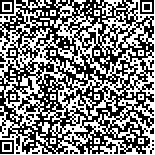下载中心
优秀审稿专家
优秀论文
相关链接
摘要

小叶锦鸡儿是内蒙古灌丛化草原中最具代表性的景观植物,准确估算小叶锦鸡儿灌丛的地上生物量对研究灌丛化草原生态系统、监测草原灌丛化程度具有重要意义。地基激光雷达TLS(Terrestrial Laser Scanning)可通过获取高密度点云数据准确估算灌木体积,被广泛应用于反演灌木生物量,但在灌丛化草原中尚未得到有效应用。本研究首先在中国科学院灌丛化草地植被恢复试验区获取了5个样方(10 m×10 m)共42株灌丛的TLS点云数据及实测生物量信息;然后分别使用整体凸包法、切片凸包法、切片分割法、体积表面差分法、体素法5种方法计算灌丛体积并与实测生物量进行回归分析;最后,通过留一交叉验证对5种方法建立的生物量估算模型精度进行对比分析。结果表明:TLS可在不破坏植被的情况下实现快速、准确地小叶锦鸡儿灌丛生物量反演,是传统野外调查方法的可靠替代技术。研究中采用的5种方法均能较好地估算灌丛生物量,其中:(1)相比于整体凸包法(R 2=0.87, p<0.001, RMSE=30.50 g),切片凸包法(R 2=0.89, p<0.001, RMSE=28.01 g)与切片分割法(R 2=0.88, p<0.001, RMSE=29.03 g)可有效减弱离群点造成的体积高估,生物量估算精度有所提升;(2)格网大小为3 cm、高度统计变量选取标准差时,体积表面差分法计算的体积与实测生物量拟合度最好(R 2=0.89, p<0.001, RMSE=28.89 g),表明高度标准差是估算小叶锦鸡儿灌丛生物量的强预测因子;(3)体素法解释了生物量估计值90%的变化(R 2=0.90, p<0.001, RMSE=26.28 g),是适合小叶锦鸡儿灌丛生物量反演的最优模型。
Caragana microphylla is the most representative plant in the shrub-encroached grassland of Inner Mongolia. Accurately estimating the aboveground biomass of Caragana microphylla is critical to study the shrub-encroached grassland ecosystem function further and to monitor the degree of shrub encroachment. Terrestrial Laser Scanning (TLS) can accurately estimate shrub volume by acquiring high-density point cloud data. It is widely used to measure shrub biomass. However, this scanning method has not been effectively applied in shrub-encroached grassland. In this study, the field-measured TLS point cloud data and the shrub biomass of 42 shrubs were first obtained in five plots (10 m × 10 m) from the shrub-encroached grassland vegetation restoration experimental area of ??the Chinese Academy of Sciences. The volume of shrub was then calculated using the method of global convex hull, convex hull by slices, volume calculation by sections, volumetric surface differencing, and voxels. The regression analysis was also carried out to predict biomass. Finally, the accuracy of biomass estimation models established by the five methods was compared and analyzed by leave-one-out cross validation. Results showed that TLS can achieve the rapid and accurate inversion of Caragana microphylla biomass without destroying vegetation, which is a reliable alternative technology for traditional field investigation methods. The five methods used in the study were able to estimate biomass effectively. Compared with the global convex hull (R 2=0.87, p<0.001, RMSE=30.50 g), the convex hull by slices (R 2=0.89, p<0.001, RMSE=28.01 g) and the volume calculation by sections (R 2=0.88, p<0.001, RMSE=29.03 g) could effectively reduce the overestimation of the volume caused by outliers, thus improving the accuracy of biomass estimation. The volumetric surface differencing fitted best with the measured biomass (R 2=0.89, p<0.001, RMSE=28.89 g) when the grid size is 3 cm. The standard deviation of height was selected as the optimal height metric of biomass prediction for Caragana microphylla. The method that used voxels explained 90% of the variation in biomass estimates (R 2=0.90, p<0.001, RMSE=26.28 g). Thus, it was the best model for the biomass inversion of Caragana microphylla.

